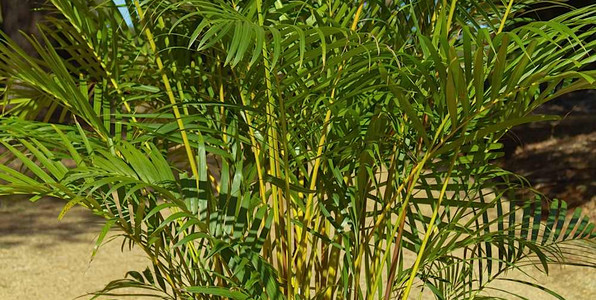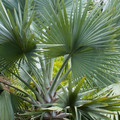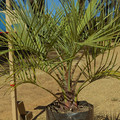Gallery
Click the thumbnails below to view image gallery:Palms are wonderful indoors. They are relatively low maintenance, attract comparatively fewer pests, and provide a truly natural and serene feel to your space. They provide a tropical look to your office and home and are known for purifying the air.
Some of the varieties that can be used indoors include:
Bamboo Palm (Chamadorea seifrizii),
Cascade Palm (Chamaedorea cataractarum
Kentia Palm (Howea forsteriana )
Golden Cane Palm (Dypsis lutescens), Kentia Palm(Howea forsteriana),
Lady Palm (Rhapis excelsa),
Parlour Palm (Chamaedorea elegans) ,
Walking Stick Palm (Linospadix monostac).
While most of these are available at nurseries in various stages of growth, it is advisable to ask a professional as to which species is best for your particular area. Different species will react differently to the atmospheric conditions in your area. Getting a species that is ideally suited to your area will cause lower frustration and require less work.
Palms, like any other plant, need a fairly delicate balance of moisture, fertilizer, light, as well as warmth, for them to thrive. Peat moss or leaf mold, along with a mixture of soil with sand, and loam, is the preferred combination for indoor palms. The soil should be rich, well drained, and moist. Soggy soil should be avoided.
Watering should be carried out carefully, with healthy amounts of water while they are growing, and lower amounts in the winter. Bright light is usually good for most species and they should, therefore, be placed in the brightest areas of your house. Palms also thrive in artificial light.
Palms should not be kept near a heat source as these can cause drying of the leaves. To maintain humidity in the room it is recommended to place a water pan in the vicinity of the pot.
The warm season is the growing season for Palms. Healthier growth will be achieved if a balanced fertilizer is used about once a month. Dusting the plant leaves with a green mist on a daily basis will keep them lush and green. However, in the winters you can reduce the frequency and amount of green mist. Dust on the leaves can be wiped down with a wet cloth.
Mealy bugs and spider mites are the most common pests that are attracted to indoor palms. Natural neem oil and insecticidal soaps are recommended to keep them at bay. White oil can be used for white palm scale but an insecticide is needed for the larger pink scale or black scale. Small amounts of scale can be removed by hand. Scale is not a major concern but it looks unsightly on palms.
What steps do you need to take in order to know how to choose the best palms for your home's interiors?
Know the extent of your commitment to grow the palm. Some indoors palm varieties require regular watering. If you cannot bring yourself to fully dedicate your time to the task, ask someone to do it in your absence.
Easy maintenance also means you need to look for indoor palms that are not vulnerable to pests and diseases.
Understand the general weather conditions inside your house and outdoors. These can have a huge impact on the overall health and survival of your indoor palms. Palms require sunlight whatever their tolerance level is. As plants they need the sun's rays to produce their own food - process of photosynthesis.
Provide a heating system when and where necessary. This goes for areas that experience colder months. Some indoor palms may not be cold hardy and in spite of being sheltered inside your home, may still have low tolerance for cold temperatures.
Identify the spots where you want to place your palm. Do research on the average height of the indoor palm to identify where it can be placed with respect to its height. Plants love being taken out in the rain or a shady location for hosing gently on a regular basis. Or even swap a plant that has been growing on the back veranda. Your palms and other plants will look better with a rest and they will last more than twice as long.
Now that you have the basics of how to choose the right palm to decorate your indoor environment, you will need some suggestions on the most popular indoor palms.
Lady Palm (Rhapis excelsa)
This is a lovely clumping fan palm and is possibly the best indoor palm. It will tolerate low light and dry conditions and is a native to southern China and Taiwan. It may be divided into separate plants.
Kentia Palm (Howea forsteriana)
This Australian palm is very popular as an indoor palm throughout the world. They are a slow growing palm especially indoors. They are a single trunked feather leafed palm. When planted in the ground they can grow up to 10 metres in height.
Fishtail Lawyer palm (Calamus caryotoides)
The Fishtail Lawyer Cane is a climbing palm that is endemic to the tropical forests of Queensland. Grown indoors, this palm can survive even a dimly lit room. It has fishtail-like leaves and can grow up to 15 metres in its natural habitat.
Pony Tail Palm (Beaucarnea recurvate)
When planted on the ground, the Pony Tail Palm can tower over 8 metres. Indoors, the height can be controlled by prevailing conditions such as the amount of sunlight and water. Its caudex, which lies partially above ground, makes it a popular indoor palm.
Golden Cane (Dypsis lutescens)
This is clumping palm tolerates indoors where it will grow a greener colour than outside, it stays a manageable size in a pot and excepts being root bound and low on water.
Growing palms indoors gives your interior the look of a tropical paradise right in your own home. The greater benefit, however, is getting visual and physical therapy from taking care of the rich green foliage.
Chinese Fan Palm (Livistona chinensis)
This palm is native to Japan and Taiwan and is slow growing in a pot but will tolerate semi- shade.
Walking Stick Palm (linospedix monostachya)
This palm is native to the Australian subtropical rainforests and grows naturally to 2 to 3 m. It is a slow grower a
<< Previous The Perfect Palm for the South Australian Climate | Back to Mullumbimby Palm Blog | Next >> Tips about Caring for Majestic Palms (Ravenea rivularis)






